It looks like you're using an Ad Blocker.
Please white-list or disable AboveTopSecret.com in your ad-blocking tool.
Thank you.
Some features of ATS will be disabled while you continue to use an ad-blocker.
share:
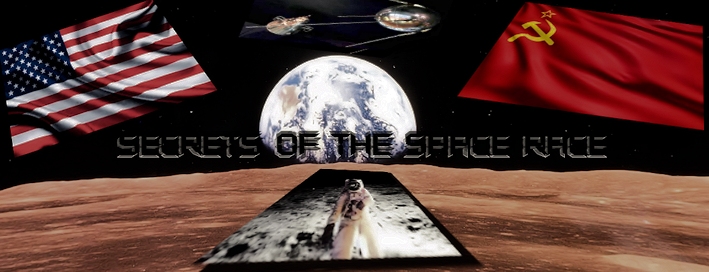
We truly live in interesting times........
New discoveries from beyond our tiny blue world are commonplace in this modern connected world we now live in. Today we are on the cusp of finding life out there. Maybe by the time you are reading this we have already found it?
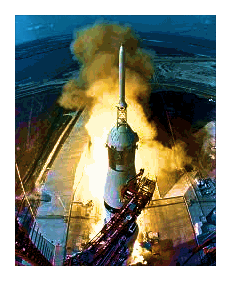 But there was something special about the early years of both Soviet and American
space programs and man’s first step out of our cradle into the universe. They were times of tense countdowns, fiery launch pad blastoffs, ocean
splashdowns, and ticker tape parades. All set against the backdrop of an edgy and sometimes extremely tense Cold War.
But there was something special about the early years of both Soviet and American
space programs and man’s first step out of our cradle into the universe. They were times of tense countdowns, fiery launch pad blastoffs, ocean
splashdowns, and ticker tape parades. All set against the backdrop of an edgy and sometimes extremely tense Cold War. This thread will revisit some of the major achievements, uncovered secrets, myths and conspiracy theories that came from those exciting, pioneering days of manned space exploration. We’ll look at how the USA secretly ‘kidnapped’ a Soviet spacecraft in 1959 and how the rumour that Yuri Gagarin was not the first man in space circulated for decades.
We’ll start our nostalgic trip back to those magic days when ‘super-science mingled with the bright stuff of dreams’ at the very beginning.....
The 1950s – The Dawn of the Space Age
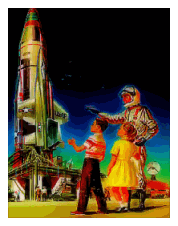 The ‘Space Race’ began as an extension to the Cold War and owes much to German
rocket science from World War II. It became a competition between Eastern Communism and Western Democracy.
The ‘Space Race’ began as an extension to the Cold War and owes much to German
rocket science from World War II. It became a competition between Eastern Communism and Western Democracy. The Soviet Union became the first nation to successfully launch a satellite into space followed by the first dog, first man and first woman into space.
But it was America who finally won the day. The Apollo team and the thousands of NASA engineers and technicians hard work all paid off in the summer of 1969 with man finally standing on the surface of the moon. . It was arguably the greatest achievement in the known history of mankind. America had won by ultimately ‘bringing democracy to outer space’ yet the war on Terra would continue for decades.
Sputnik – Oct 4th 1957
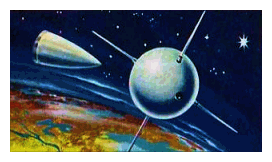 Back in the 1950s it was the Soviets who claimed the first victory of the Space
Race. The launch of Sputnik was a stunning triumph that really shocked not just the United States but the whole Western World.
Back in the 1950s it was the Soviets who claimed the first victory of the Space
Race. The launch of Sputnik was a stunning triumph that really shocked not just the United States but the whole Western World. The Kremlin of course used it for propaganda purposes. But the Russians had no real concerted plan to dominate space at the time.
Sputnik was in fact born from a Soviet desire for a rocket capable of delivering a nuclear warhead aimed at the United States. However when the project hit a snag, Sergei Korolyov, the leader of the Soviet Space Program, convinced the Kremlin to launch a satellite instead.
The USA was already developing a satellite named Vanguard. So Korolyov decided to ignore plans to add scientific instruments in order to be first. Sputnik, weighing just 184lbs (84 kilos), was built in less than three months using polished aluminium alloy, two radio transmitters and four antennas. It was spherical to represent the shape of the earth.
Korolyov said to his deputy Boris Chertok.
"Earth is a sphere, and its first satellite also must have a spherical shape,”
Sputnik 2 – Nov 3rd 1957
 Sputnik 2, (dubbed ‘Muttnik’ in some US newspapers) remained in orbit for
almost 5 months until April 13, 1958. It is notable because Laika ,‘the space dog’, became the first animal in space. Laika was a stray dog
picked up from the streets of Moscow. Others had been used for sub-orbital missions but Laika became the first cosmonaut due to her small size and
calm temperament. The flight was designed to test the safety of space travel for humans.
Sputnik 2, (dubbed ‘Muttnik’ in some US newspapers) remained in orbit for
almost 5 months until April 13, 1958. It is notable because Laika ,‘the space dog’, became the first animal in space. Laika was a stray dog
picked up from the streets of Moscow. Others had been used for sub-orbital missions but Laika became the first cosmonaut due to her small size and
calm temperament. The flight was designed to test the safety of space travel for humans. The Soviets for a long time stated that Laika’s food had been laced with poison and she had passed away humanely after a few days in space. It was not until 2002 that the truth was fully revealed. Just a few hours into her historic journey Laika had died in a panic and from overheating in the cramped conditions. Sputnik 2 had become Laika’s coffin.
Laika’s place in history has now been rightly honoured in the form of a statue at Star City in Russia.
More : BBC News
Explorer 1 and Vanguard 1 - 1958
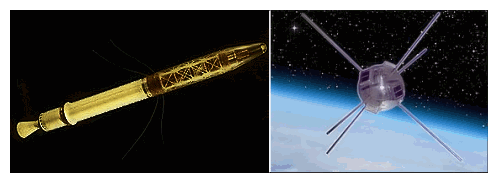
The United States was still playing catch up with the Soviet Union and it wasn’t until Jan 31st 1958 that a first successful launch was made into space. Explorer 1, the first in a long line of craft to bear its name, was instrumental in the discovery of the Van Allen radiation belts circling the Earth.
Vanguard 1 was the 4th manmade object launched into space and remains the oldest piece of space hardware still in orbit. Launched on March 17th 1958 it continued transmitting until 1964 when its mission was terminated. Later that year October 1st, 1958, marked the foundation of the National Aeronautics and Space Administration (NASA).
The satellite is now derelict in space. Although there was talk a few years ago of bringing it back down to earth and placing it in a museum if the funding and technology was made available.
Luna Hijack
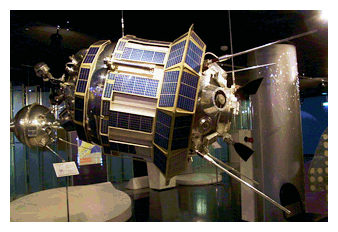 Luna 1 was the first spacecraft to reach the moon. Leaving Earth’s
gravitational field on Jan 2nd 1959 spouting a trail of orange sodium gas it finally reached its target on January 4th 1959.
Luna 1 was the first spacecraft to reach the moon. Leaving Earth’s
gravitational field on Jan 2nd 1959 spouting a trail of orange sodium gas it finally reached its target on January 4th 1959. Luna 1 was intended to impact with the moon. This major coup for the Soviets during the early days of the Space Race was not achieved until a 2nd mission later in the year. Luna 1 actually missed its target. The spacecraft did manage to fly successfully past Earth’s satellite on January 4th 1959. Missing the lunar surface by around 4000 miles it eventually became the first spacecraft to go into orbit around the sun. Luna 2 did hit the moon on Sept 13th 1959 whilst Luna 3 photographed the far side of the moon on Oct 4th 1959.
At this point the USSR was drawing ahead of the US in space exploration and America was desperate for a sneak view of Soviet space technology. An opportunity arose when the Soviets, ever eager to promote their technical prowess, organised exhibitions of the Luna craft in various cities across the world.
Revealed in a 1994 document the CIA actually planned, and succeeded in, a ‘kidnapping’ of the Luna (Lunik) spacecraft from right under the noses of the Soviets without them ever realizing what had happened. The 1967 issue Studies in Intelligence refers to the incident happening “a number of years ago..”
>>>continues below.....
edit on 30/4/17 by mirageman because: replaced video
The time and place of this ‘event’ are not disclosed in the official documentation. But other sources lead me to believe a reconnaissance occurred
in Paris whilst the actual ‘kidnapping’ occurred in Mexico in 1959.
The article describes how after the exhibition closed, “a group of intelligence officers had unrestricted access to the Lunik for some 24 hours”. Here the CIA became aware from agents in Paris that, what everyone thought to be a basic replica of the Luna craft was in fact as good as the genuine article.
When the exhibition was moved on to Mexico the operation was more difficult due to the Soviets putting a 24 hour guard with the exhibition. But the CIA soon discovered that the Luna would be transported on a truck and then by rail to the next city. It was discretely arranged for the Luna to be on the last truck to leave the exhibition and ensure that no Soviet guard would provide an escort. The truck was then stopped at the last possible turn-off at around 7pm. The driver was ‘detained’ by Mexican intelligence in a hotel and persuaded to help them. This was easily achieved with the offer of cash, drink and a female ‘escort’ for the evening.
The Soviet official stationed at the rail yards seemed to suspect nothing and left for his hotel after the truckloads seemed to have stopped arriving.

Then American spies broke into the crate, disassembled the spacecraft, carefully photographed each and every part and had the Luna back on the truck with the original driver heading for the rail yards by 5am next morning. The Soviet official did not appear any the wiser when he arrived at 7am with an intact Luna spacecraft waiting on the truck for him.
In the end, despite the intricate plot, America probably didn’t gain any real advantage in the space race.
Further Reading
The Kidnapping of the Lunik (free pdf)
The Plan to Nuke the Moon and Other Cold War Plots Revealed in Secret Documents
“Ghost” Cosmonauts
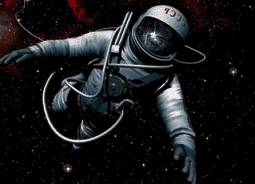 Yuri Gagarin had become the first man in history to journey into outer space. The
Soviet Union announced this on Wednesday April 12th, 1961. But for a long time there were rumours that Yuri Gagarin was actually NOT the first man in
space and that other cosmonauts had perished before him.
Yuri Gagarin had become the first man in history to journey into outer space. The
Soviet Union announced this on Wednesday April 12th, 1961. But for a long time there were rumours that Yuri Gagarin was actually NOT the first man in
space and that other cosmonauts had perished before him.
Were the men in the Politburo really unwilling to admit these failures despite a very human tragedy or was it all just hearsay?
While the Iron Curtain remained in place rumours continued to circulate. There were various sources that seemed to cement these reports.
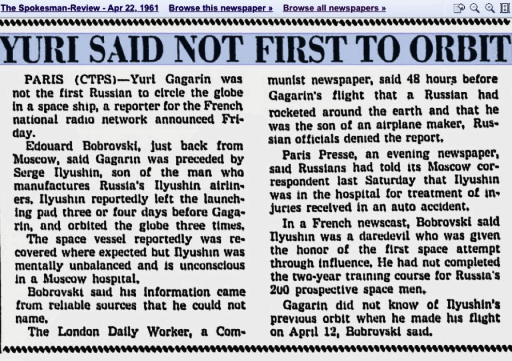
The story that a famous test pilot called Vladimir Sergeyevich Ilyushin had failed to reach space on April 7, 1961 began with journalist Eduard Brobovski in France and Dennis Ogden, the Moscow correspondent, of a British newspaper The Daily Worker. Ogden claimed Ilyushin had failed to control his descent back to Earth and landed in China. His whereabouts around the time of Yuri Gagarin’s successful space mission remained a mystery. Ilyushin, a Soviet hero, was supposedly held for over a year in China until he was released. With the Chinese authorities supposedly agreeing to cover up what had really happened. The Soviets claimed he was being treated after an automobile accident.
Another cosmonaut Valentin Bondarenko was killed in training in a pressure chamber in March 1961. He made a fatal mistake when he removed the sensors attached to his skin. He cleaned the spots where they had been attached with a ball of cotton wool soaked in alcohol. Bondarenko than carelessly threw the cotton wool onto the ring of an electric hot plate without looking. The chamber was oxygen-enriched and resulted in severe and fatal burns to Bondarenko. The truth was never released until 1986.
In October of 1960, 150 people or more were incinerated on a rocket launchpad after an explosion of an R-16 ballistic missile. The truth was only acknowledged in 1989 with the fall of the old Soviet Union.
In 1960 Robert Heinlein wrote an article “Pravda Means Truth”. He stated that some Red Army cadets had told him on a visit to Lithuania that on May 15th 1960 that the Soviet Union had launched manned spacecraft into Earth orbit. The Soviets denied it .
 In Italy amateur radio operators, the Judica-Cordiglia brothers, made recordings
at Torre Bert that allegedly supported a conspiracy that the Soviets had covered up a number of cosmonaut deaths in space during the 1960s. The
brothers had tapes purporting to be from secret Soviet space missions launched by the USSR with fatal consequences.
In Italy amateur radio operators, the Judica-Cordiglia brothers, made recordings
at Torre Bert that allegedly supported a conspiracy that the Soviets had covered up a number of cosmonaut deaths in space during the 1960s. The
brothers had tapes purporting to be from secret Soviet space missions launched by the USSR with fatal consequences.
The recordings were said to include recordings of :
• May 1960, a manned Soviet spacecraft veering off course.
• November, 1960, a faint SOS Morse Code signal from another Soviet craft leaving orbit
• February 1961, a cosmonaut suffocating to death.
• April 1961, a capsule orbiting the Earth then re-entering the Earth’s atmosphere a few days before Yuri Gagarin made his historic flight.
• May 1961, an orbiting spacecraft signalling for assistance after going out of control.
• October 1961, a cosmonaut failing to control a craft which eventually disappeared into deep space.
• November 1962, a space capsule bouncing off the Earth’s atmosphere in a mis-calculated re-entry attempt and shooting out into space.
• November 1963, a female cosmonaut screaming whilst perishing in a Soviet capsule burning up as it re-enters Earth’s atmosphere.
• April 1964, another capsule burning up in the Earth’s atmosphere and another cosmonaut losing their life.
In December 1959, an alleged leak from a Czechoslovakian official supposedly revealed unofficial Soviet space shots had taken place. Apparently Cosmonaut Aleksei Ledovsky had been launched inside a converted R-5A rocket and had perished. Three other cosmonauts Andrei Mitkov, Sergei Shiborin and Maria Gromova were also said to have lost their lives in space in 1959.
Hungarian Engineer and physicist Hermann Oberth claimed that a pilot had been killed on test flight from Kapustin Yar in early 1958. The Italian news bureau Continentale also claimed cosmonaut deaths on suborbital flights had been covered up by the Soviet Union but had been leaked by a high-ranking Czech communist. Continentale named Alexei Ledowsky, Serenty Schriborin, Andreij Mitkow, and Mirija Gromov as the cosmonauts.
However powerful listening stations like Jodrell Bank in the UK claimed to have not received signals the Cordiglia brothers seemed to be shouting about. Their claims were also refuted by respected member of ATS ,former NASA engineer, space historian and journalist, James Oberg see : Free pdf
Mr. Oberg did, however, find proof of tampering with certain photographs to erase certain personalities out of Soviet Space history in his interesting free booklet “Cosmonauts or Cosmo-nots”
>>>continues below.....
The article describes how after the exhibition closed, “a group of intelligence officers had unrestricted access to the Lunik for some 24 hours”. Here the CIA became aware from agents in Paris that, what everyone thought to be a basic replica of the Luna craft was in fact as good as the genuine article.
When the exhibition was moved on to Mexico the operation was more difficult due to the Soviets putting a 24 hour guard with the exhibition. But the CIA soon discovered that the Luna would be transported on a truck and then by rail to the next city. It was discretely arranged for the Luna to be on the last truck to leave the exhibition and ensure that no Soviet guard would provide an escort. The truck was then stopped at the last possible turn-off at around 7pm. The driver was ‘detained’ by Mexican intelligence in a hotel and persuaded to help them. This was easily achieved with the offer of cash, drink and a female ‘escort’ for the evening.
The Soviet official stationed at the rail yards seemed to suspect nothing and left for his hotel after the truckloads seemed to have stopped arriving.

Then American spies broke into the crate, disassembled the spacecraft, carefully photographed each and every part and had the Luna back on the truck with the original driver heading for the rail yards by 5am next morning. The Soviet official did not appear any the wiser when he arrived at 7am with an intact Luna spacecraft waiting on the truck for him.
In the end, despite the intricate plot, America probably didn’t gain any real advantage in the space race.
Further Reading
The Kidnapping of the Lunik (free pdf)
The Plan to Nuke the Moon and Other Cold War Plots Revealed in Secret Documents
“Ghost” Cosmonauts
 Yuri Gagarin had become the first man in history to journey into outer space. The
Soviet Union announced this on Wednesday April 12th, 1961. But for a long time there were rumours that Yuri Gagarin was actually NOT the first man in
space and that other cosmonauts had perished before him.
Yuri Gagarin had become the first man in history to journey into outer space. The
Soviet Union announced this on Wednesday April 12th, 1961. But for a long time there were rumours that Yuri Gagarin was actually NOT the first man in
space and that other cosmonauts had perished before him. Were the men in the Politburo really unwilling to admit these failures despite a very human tragedy or was it all just hearsay?
While the Iron Curtain remained in place rumours continued to circulate. There were various sources that seemed to cement these reports.

The story that a famous test pilot called Vladimir Sergeyevich Ilyushin had failed to reach space on April 7, 1961 began with journalist Eduard Brobovski in France and Dennis Ogden, the Moscow correspondent, of a British newspaper The Daily Worker. Ogden claimed Ilyushin had failed to control his descent back to Earth and landed in China. His whereabouts around the time of Yuri Gagarin’s successful space mission remained a mystery. Ilyushin, a Soviet hero, was supposedly held for over a year in China until he was released. With the Chinese authorities supposedly agreeing to cover up what had really happened. The Soviets claimed he was being treated after an automobile accident.
Another cosmonaut Valentin Bondarenko was killed in training in a pressure chamber in March 1961. He made a fatal mistake when he removed the sensors attached to his skin. He cleaned the spots where they had been attached with a ball of cotton wool soaked in alcohol. Bondarenko than carelessly threw the cotton wool onto the ring of an electric hot plate without looking. The chamber was oxygen-enriched and resulted in severe and fatal burns to Bondarenko. The truth was never released until 1986.
In October of 1960, 150 people or more were incinerated on a rocket launchpad after an explosion of an R-16 ballistic missile. The truth was only acknowledged in 1989 with the fall of the old Soviet Union.
In 1960 Robert Heinlein wrote an article “Pravda Means Truth”. He stated that some Red Army cadets had told him on a visit to Lithuania that on May 15th 1960 that the Soviet Union had launched manned spacecraft into Earth orbit. The Soviets denied it .
 In Italy amateur radio operators, the Judica-Cordiglia brothers, made recordings
at Torre Bert that allegedly supported a conspiracy that the Soviets had covered up a number of cosmonaut deaths in space during the 1960s. The
brothers had tapes purporting to be from secret Soviet space missions launched by the USSR with fatal consequences.
In Italy amateur radio operators, the Judica-Cordiglia brothers, made recordings
at Torre Bert that allegedly supported a conspiracy that the Soviets had covered up a number of cosmonaut deaths in space during the 1960s. The
brothers had tapes purporting to be from secret Soviet space missions launched by the USSR with fatal consequences. The recordings were said to include recordings of :
• May 1960, a manned Soviet spacecraft veering off course.
• November, 1960, a faint SOS Morse Code signal from another Soviet craft leaving orbit
• February 1961, a cosmonaut suffocating to death.
• April 1961, a capsule orbiting the Earth then re-entering the Earth’s atmosphere a few days before Yuri Gagarin made his historic flight.
• May 1961, an orbiting spacecraft signalling for assistance after going out of control.
• October 1961, a cosmonaut failing to control a craft which eventually disappeared into deep space.
• November 1962, a space capsule bouncing off the Earth’s atmosphere in a mis-calculated re-entry attempt and shooting out into space.
• November 1963, a female cosmonaut screaming whilst perishing in a Soviet capsule burning up as it re-enters Earth’s atmosphere.
• April 1964, another capsule burning up in the Earth’s atmosphere and another cosmonaut losing their life.
In December 1959, an alleged leak from a Czechoslovakian official supposedly revealed unofficial Soviet space shots had taken place. Apparently Cosmonaut Aleksei Ledovsky had been launched inside a converted R-5A rocket and had perished. Three other cosmonauts Andrei Mitkov, Sergei Shiborin and Maria Gromova were also said to have lost their lives in space in 1959.
Hungarian Engineer and physicist Hermann Oberth claimed that a pilot had been killed on test flight from Kapustin Yar in early 1958. The Italian news bureau Continentale also claimed cosmonaut deaths on suborbital flights had been covered up by the Soviet Union but had been leaked by a high-ranking Czech communist. Continentale named Alexei Ledowsky, Serenty Schriborin, Andreij Mitkow, and Mirija Gromov as the cosmonauts.
However powerful listening stations like Jodrell Bank in the UK claimed to have not received signals the Cordiglia brothers seemed to be shouting about. Their claims were also refuted by respected member of ATS ,former NASA engineer, space historian and journalist, James Oberg see : Free pdf
Mr. Oberg did, however, find proof of tampering with certain photographs to erase certain personalities out of Soviet Space history in his interesting free booklet “Cosmonauts or Cosmo-nots”
>>>continues below.....
edit on 30/4/17 by mirageman because: tidy up
Why the Soviets Lost the Race to Land a Man on the Moon
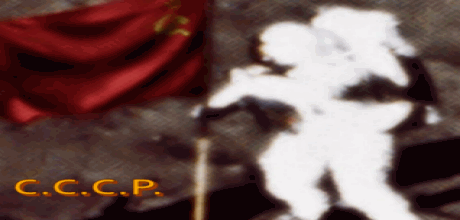
For a long time it really seemed like the Soviet Union would pull it off and get a man to walk on our moon before the Americans. They’d already achieved their first controlled ‘soft’ landing on the moon in February 1966. It confirmed a number of things about the lunar surface. Most importantly of all that it could bear the weight of a human being without causing problems. Allaying concerns that the surface may act like quicksand.
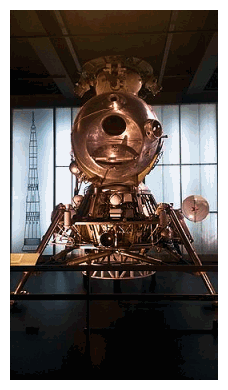 The Soviet lunar project was very much like the American one. The plan was to use
a giant rocket and place a 2 man crew, Lander and Command spacecraft into a Lunar orbit. One of the two cosmonauts would then make a short spacewalk
to the Lunar Lander and control the craft to a soft landing onto the surface of the moon.
The Soviet lunar project was very much like the American one. The plan was to use
a giant rocket and place a 2 man crew, Lander and Command spacecraft into a Lunar orbit. One of the two cosmonauts would then make a short spacewalk
to the Lunar Lander and control the craft to a soft landing onto the surface of the moon.
Famous cosmonaut Alexei Leonov had trained a number of times in the LK lander (pictured) and could well have been the first human being to set foot on the moon had history taken a different turn.
What set the Apollo and Soviet programs apart were the extra backups that the Soviets had planned. The LK lander had a second engine in case the first failed. The Soviets also planned to send a second unmanned lander to the moon in advance in case the manned lander was rendered unusable after landing. In addition a robotic moon rover, acting as a beacon, would be sent ahead and could double up as transport to the backup lander by the cosmonaut in emergency.
So why did the Soviets lose the race to the moon?
There were a number of reasons. One was that they may have been winning the space race in the early 1960s but they were behind in the ‘Arms Race’. Shaken after the Cuban Missile Crisis the Soviets chose to bolster their military technology but this was at a cost of losing ground in space.
In America President John F. Kennedy had inspired NASA to work towards a single goal of putting a man on the moon before the decade was out. In the Soviet Republics priorities were less well defined. The biggest problem came with their rocket technology. The huge N1 rocket that was developed to reach the moon failed in all of its test launches.
In the early 1970s with NASA having reached the moon first, the Soviets curtailed their plans to put their own man on the moon. Doug Millard, space curator at London’s Science Museum said recently:
Which bring us on to.....
No I won’t be going there. After reading all the above surely you believe we really did go to the moon?
I’ll leave you with REM and encourage you take a closer look at the message in this video

For a long time it really seemed like the Soviet Union would pull it off and get a man to walk on our moon before the Americans. They’d already achieved their first controlled ‘soft’ landing on the moon in February 1966. It confirmed a number of things about the lunar surface. Most importantly of all that it could bear the weight of a human being without causing problems. Allaying concerns that the surface may act like quicksand.
 The Soviet lunar project was very much like the American one. The plan was to use
a giant rocket and place a 2 man crew, Lander and Command spacecraft into a Lunar orbit. One of the two cosmonauts would then make a short spacewalk
to the Lunar Lander and control the craft to a soft landing onto the surface of the moon.
The Soviet lunar project was very much like the American one. The plan was to use
a giant rocket and place a 2 man crew, Lander and Command spacecraft into a Lunar orbit. One of the two cosmonauts would then make a short spacewalk
to the Lunar Lander and control the craft to a soft landing onto the surface of the moon. Famous cosmonaut Alexei Leonov had trained a number of times in the LK lander (pictured) and could well have been the first human being to set foot on the moon had history taken a different turn.
What set the Apollo and Soviet programs apart were the extra backups that the Soviets had planned. The LK lander had a second engine in case the first failed. The Soviets also planned to send a second unmanned lander to the moon in advance in case the manned lander was rendered unusable after landing. In addition a robotic moon rover, acting as a beacon, would be sent ahead and could double up as transport to the backup lander by the cosmonaut in emergency.
So why did the Soviets lose the race to the moon?
There were a number of reasons. One was that they may have been winning the space race in the early 1960s but they were behind in the ‘Arms Race’. Shaken after the Cuban Missile Crisis the Soviets chose to bolster their military technology but this was at a cost of losing ground in space.
In America President John F. Kennedy had inspired NASA to work towards a single goal of putting a man on the moon before the decade was out. In the Soviet Republics priorities were less well defined. The biggest problem came with their rocket technology. The huge N1 rocket that was developed to reach the moon failed in all of its test launches.
In the early 1970s with NASA having reached the moon first, the Soviets curtailed their plans to put their own man on the moon. Doug Millard, space curator at London’s Science Museum said recently:
“If Leonov had been the first man on the Moon, the flag would have been different but it would still have wobbled about – because once you touch a flag on the Moon it doesn’t stop wobbling,”
“It would have been the same conspiracy theories all over again.”
Which bring us on to.....
No I won’t be going there. After reading all the above surely you believe we really did go to the moon?
I’ll leave you with REM and encourage you take a closer look at the message in this video
edit on 30/4/17 by mirageman because: tidy up
a reply to: mirageman
Super sad about the Dog (Laika's) I never heard about that before.
Lots of other great info. Thanks for sharing. Will go through more of it later.
Super sad about the Dog (Laika's) I never heard about that before.
It was not until 2002 that the truth was fully revealed. Just a few hours into her historic journey Laika had died in a panic and from overheating in the cramped conditions. Sputnik 2 had become Laika’s coffin.
Lots of other great info. Thanks for sharing. Will go through more of it later.
Those two incidents one space craft skipping off earths atmosphere into deep space and the other one uncontrolled into deep space, if true would be my
absolute nightmare.
I would want a cyanide capsule on any mission to space just in case.
Anyone know if that's feasible to skip off earths atmosphere and still have enough energy to escape earths gravity?
I would want a cyanide capsule on any mission to space just in case.
Anyone know if that's feasible to skip off earths atmosphere and still have enough energy to escape earths gravity?
originally posted by: mirageman
a reply to: Spader
Maybe you'll even work out what that REM video was all about back in the day.
I've been a fan of REM since 1985 in high school.
Starting with Murmer and ending with Automatic For The People.
I didn't especially like anything they did after 1992.
And a ove all, I learned early on not to try and decipher Michael Stipes lyrics.
Just loved the tunes. I did try to remember the lyrics to Its The End Of The End Of The Worlld, but got lost after LEONARD BERNSTEIN.
a reply to: mirageman
Anyone with knowledge of the early history of "flying saucers"/UFOs after WWII knows quite well that those mysterious craft that defied all current earthly vehicles of those days must have been more than a slight reason why the two mighty powers engaged in ruling space at any cost in those early days of space flight. Wanting to gain the attention of visiting ETs would have been seen by the inner powers of government as paramount. That reason is what broke the Soviet bank.
Citing a history of the "space race" between the Americans and the Soviets without including the important psychological aspect that UFOs added to the whole drama is virtually criminal or at least literary malfeasance.
Anyone with knowledge of the early history of "flying saucers"/UFOs after WWII knows quite well that those mysterious craft that defied all current earthly vehicles of those days must have been more than a slight reason why the two mighty powers engaged in ruling space at any cost in those early days of space flight. Wanting to gain the attention of visiting ETs would have been seen by the inner powers of government as paramount. That reason is what broke the Soviet bank.
Citing a history of the "space race" between the Americans and the Soviets without including the important psychological aspect that UFOs added to the whole drama is virtually criminal or at least literary malfeasance.
It will take a while for me to get through all this, but it's a good occupation for a rainy Sunday night!
Look how long a few of those satellites that are heading out of our solar system have been operating. I think they made some pretty good stuff years
ago. They will probably still be transmitting for another twenty years, but whether we will receive the signal I do not know, the suns heliosphere
may dampen it after a while.
awesome thread!
im on a fence on the lost cosmonauts things on one way it looks plausible in the other it sound like anti-soviet propaganda
im on a fence on the lost cosmonauts things on one way it looks plausible in the other it sound like anti-soviet propaganda
I think the Lost Cosmonauts side would make for quite a good thriller-horror movie
Honestly, considering the technology of the time period I believe that no trip to the moon ever happened. I don't believe the earth is flat or the
moon is fake, it's just unrealistic to me especially considering the power of an original game boy blows apollo computers out of the water and we
can't even put a base on the moon but put one every where else in the world lol. It should be cake going to the moon we should be at mars already and
I don't think space x will happen either. Also considering the developments in science its been proven space is practically more then fallout levels
of radiation starting with the van allen belt and i don't care what anyone says to debunk the van allen belt theory because even if the van allen belt
isn't a problem you're still not protected from space elements.
Damnit the flag was STILL when the astronaut hopped by without touching it.
new topics
-
Former DOJ charged with defrauding Rep. Matt Gaetz’s family over sex-crimes investigation
Propaganda Mill: 3 hours ago
top topics
-
Former DOJ charged with defrauding Rep. Matt Gaetz’s family over sex-crimes investigation
Propaganda Mill: 3 hours ago, 9 flags -
Swedish Minister for Gender Equality is Seeking Treatment for Phobia of Bananas
Politicians & People: 13 hours ago, 7 flags -
The mysterious death of Aileen Conway
General Chit Chat: 17 hours ago, 6 flags -
Satanic ‘Little Season’ of Deception.. Awaken to the Handiwork of the Creator.
ATS Skunk Works: 14 hours ago, 4 flags -
USA-BIDEN and CHINA-Xi Agree Not To Let Artificial Intelligence Decide Nuclear Weapons Use.
World War Three: 14 hours ago, 3 flags
active topics
-
How can you defend yourself when the police will not tell you what you did?
Posse Comitatus • 97 • : covent -
Priests of the Temple of Syrinx
Social Issues and Civil Unrest • 48 • : Solvedit -
Former DOJ charged with defrauding Rep. Matt Gaetz’s family over sex-crimes investigation
Propaganda Mill • 6 • : fringeofthefringe -
The Reactionary Conspiracy 6. Modus Operandi II
General Conspiracies • 127 • : MarxistDebunker2 -
Bucks County commissioners vote to count illegal ballots in Pennsylvania recount
2024 Elections • 23 • : Kaiju666 -
The Trump effect 6 days after 2024 election
2024 Elections • 151 • : fringeofthefringe -
Post A Funny (T&C Friendly) Pic Part IV: The LOL awakens!
General Chit Chat • 7779 • : baddmove -
The mysterious death of Aileen Conway
General Chit Chat • 12 • : CarlLaFong -
I’m Looking for Information on the Light We See at Death.
The Gray Area • 65 • : whereislogic -
President-elect TRUMP Picks MATT GAETZ for his ATTORNEY GENERAL - High Level PANIC Ensues.
2024 Elections • 94 • : RickinVa

